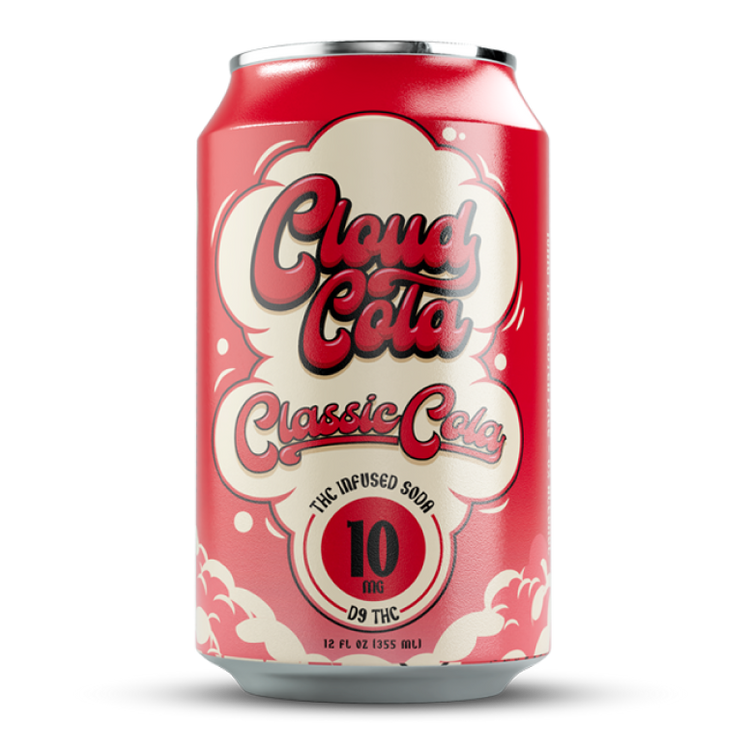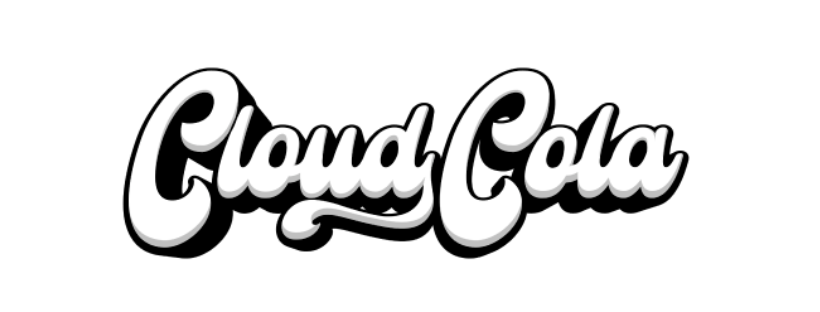How THC Soda Is Made: A Behind-the-Scenes Look At Cannabis Drinks
Ingredients
Crafting delicious and potent cannabis drinks requires a careful balance of ingredients.
THC Extract
At the heart of any THC soda lies THC extract, the concentrated form of the psychoactive compound found in cannabis. This extract can be derived through various methods, such as CO2 extraction or butane hash oil (BHO) production, each yielding a distinct profile in terms of potency and flavor.
Carbonated Water
Carbonated water serves as the base for THC soda, providing the fizz and refreshing character.
Its bubbles act as a vehicle for dissolving the THC extract, ensuring even distribution throughout the beverage.
Flavors and Sweeteners
To enhance the flavor profile, manufacturers often incorporate natural fruit juices, botanical extracts, or essential oils. These additions not only complement the taste of the THC but also mask any undesirable planty or earthy notes that may be present in the extract.
Sweeteners play a crucial role in balancing the bitterness of THC and creating a palatable drinking experience. Common choices include sugar, high fructose corn syrup, agave nectar, or natural sweeteners derived from fruits like stevia or monk fruit.
Extraction Process
The creation of a compelling cannabis drink hinges on extracting the essence of THC. This potent psychoactive compound found in cannabis plants requires careful methods to isolate and concentrate its effects.
CO2 Extraction
One of the most popular methods for extracting THC is CO2 extraction. This process utilizes pressurized carbon dioxide to dissolve the desired compounds from the plant material.
- The cannabis flowers or trichomes are placed in a sealed chamber and subjected to high pressure and temperature.
- Carbon dioxide, which acts as a solvent at these conditions, dissolves the THC and other cannabinoids along with some terpenes.
- The CO2 is then depressurized, causing it to revert to its gaseous state and leaving behind a highly concentrated THC extract.
This method produces a clean, pure extract that is free from residual solvents often associated with other extraction techniques. CO2 extraction is also considered to be safer and more environmentally friendly.

Solvent Extraction (Alternatives)
While CO2 extraction is a popular choice, there are alternative methods for extracting THC. One such alternative is solvent extraction using hydrocarbons like butane or propane.
This method involves passing the solvent through the cannabis plant material, which dissolves the THC and other cannabinoids. The solvent is then evaporated, leaving behind a concentrated extract.
While hydrocarbon extraction can produce high-potency extracts, it carries risks associated with flammability and potential residual solvent contamination if not performed carefully.
Infusion Process
Infusing beverages with THC requires a precise process that blends potent cannabis extract with the refreshing base of carbonated water.
Mixing THC with Carbonated Water
To infuse carbonated water with THC, manufacturers typically start with a concentrated THC extract obtained through methods like CO2 extraction or butane hash oil (BHO) production. This extract is carefully measured and then gradually added to the carbonated water while constantly stirring.
The stirring ensures that the THC dissolves evenly throughout the beverage and prevents clumping.
The infusion process can take several hours to ensure complete solubility and a consistent THC concentration in each serving.
Temperature Control for Infusion
Temperature control is crucial during the infusion process.
Heating the mixture too high can degrade the THC, reducing its potency and potentially altering its flavor profile.
Conversely, insufficient heat can hinder the dissolution of the extract in the carbonated water.
Manufacturers carefully monitor the temperature throughout the infusion process, typically maintaining it within a range that ensures optimal extraction and preserves the quality of the THC.
Flavoring and Sweetening
Crafting delicious and potent cannabis drinks requires a careful balance of ingredients. At the heart of any THC soda lies THC extract, the concentrated form of the psychoactive compound found in cannabis. This extract can be derived through various methods, such as CO2 extraction or butane hash oil (BHO) production, each yielding a distinct profile in terms of potency and flavor.
Adding Natural or Artificial Flavors
To enhance the flavor profile, manufacturers often incorporate natural fruit juices, botanical extracts, or essential oils. These additions not only complement the taste of the THC but also mask any undesirable planty or earthy notes that may be present in the extract.
Sweeteners play a crucial role in balancing the bitterness of THC and creating a palatable drinking experience. Common choices include sugar, high fructose corn syrup, agave nectar, or natural sweeteners derived from fruits like stevia or monk fruit.
Choosing Sweetener Options
Choosing the right sweetener is key to crafting a delicious and balanced THC soda.
Sugar is a traditional option, providing a familiar sweetness and dissolving readily in carbonated beverages.
High fructose corn syrup offers a similar sweetness profile but at a lower cost. Agave nectar boasts a milder flavor and a slightly lower glycemic index compared to sugar.

For those seeking natural alternatives, stevia and monk fruit sweeteners provide intense sweetness with minimal calories.
Bottling and Packaging
The final stage of production involves bottling and packaging the THC soda. This crucial step ensures that the product is preserved, protected from contamination, and ready for consumer enjoyment.
Carbonation Levels and Preservation
Bottling and packaging play a vital role in preserving the quality and potency of THC soda.
- Choice of Container: Aluminum cans or dark glass bottles are preferred for packaging THC soda. Aluminum cans provide excellent protection against light and oxygen, which can degrade the THC over time. Dark glass bottles also shield the beverage from harmful UV rays.
- Carbonation Levels: The level of carbonation is carefully controlled during bottling to maintain the desired fizz and freshness. Overcarbonation can lead to excessive pressure buildup, potentially causing bottles to explode or leak.
- Preservation Techniques: Manufacturers often employ various preservation techniques to extend the shelf life of THC soda. These may include pasteurization, which involves heating the beverage to kill bacteria and yeasts, or the addition of preservatives such as antioxidants.
Labeling Requirements and Regulations
The final stage of production involves bottling and packaging the THC soda. This crucial step ensures that the product is preserved, protected from contamination, and ready for consumer enjoyment.
Bottling and packaging play a vital role in preserving the quality and potency of THC soda.
- Choice of Container: Aluminum cans or dark glass bottles are preferred for packaging THC soda. Aluminum cans provide excellent protection against light and oxygen, which can degrade the THC over time. Dark glass bottles also shield the beverage from harmful UV rays.
- Carbonation Levels: The level of carbonation is carefully controlled during bottling to maintain the desired fizz and freshness. Overcarbonation can lead to excessive pressure buildup, potentially causing bottles to explode or leak.
- Preservation Techniques: Manufacturers often employ various preservation techniques to extend the shelf life of THC soda. These may include pasteurization, which involves heating the beverage to kill bacteria and yeasts, or the addition of preservatives such as antioxidants.
Labeling requirements for cannabis products, including THC soda, are stringent and vary depending on the jurisdiction.
Compliance with these regulations is essential for manufacturers to legally sell their products and ensure consumer safety.
- Required Information: Cannabis product labels typically include a wealth of information, such as the brand name, THC potency (in milligrams or percentage), ingredients list, manufacturing date, batch number, storage instructions, and warning statements.
- Child-Resistant Packaging: To prevent accidental ingestion by children, THC soda must be packaged in child-resistant containers that meet specific safety standards. These containers often feature features like a locking mechanism or tamper-evident seals.
- Age Verification: In many regions, the sale of cannabis products is restricted to adults aged 21 or older. Retailers selling THC soda are typically required to verify the age of customers before completing a purchase.
Cloud Cola’s infused cannabis sodas – taste the difference
- Why Cant You Smoke After Lip Filler - November 15, 2025
- What Is The Best Filler For Neck Lift? - November 13, 2025
- What Are The Benefits And Drawbacks Of Being A Demisexual Person In A Relationship? - November 12, 2025
